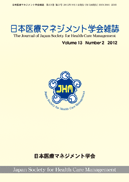Volume 15, Issue 2
Displaying 1-12 of 12 articles from this issue
- |<
- <
- 1
- >
- >|
Original Articles
-
Article type: Original Articles
2014Volume 15Issue 2 Pages 81-86
Published: September 01, 2014
Released on J-STAGE: July 02, 2021
Download PDF (666K) -
Article type: Original Articles
2014Volume 15Issue 2 Pages 87-95
Published: September 01, 2014
Released on J-STAGE: July 02, 2021
Download PDF (1976K) -
Article type: Original Articles
2014Volume 15Issue 2 Pages 96-101
Published: September 01, 2014
Released on J-STAGE: July 02, 2021
Download PDF (925K)
Review Article
-
Article type: Review Article
2014Volume 15Issue 2 Pages 102-107
Published: September 01, 2014
Released on J-STAGE: July 02, 2021
Download PDF (726K)
Case Reports
-
Article type: Case Reports
2014Volume 15Issue 2 Pages 108-113
Published: September 01, 2014
Released on J-STAGE: July 02, 2021
Download PDF (1137K) -
Article type: Case Reports
2014Volume 15Issue 2 Pages 114-118
Published: September 01, 2014
Released on J-STAGE: July 02, 2021
Download PDF (1420K) -
Article type: Case Reports
2014Volume 15Issue 2 Pages 119-123
Published: September 01, 2014
Released on J-STAGE: July 02, 2021
Download PDF (837K) -
Article type: Case Reports
2014Volume 15Issue 2 Pages 124-129
Published: September 01, 2014
Released on J-STAGE: July 02, 2021
Download PDF (2156K) -
Article type: Case Reports
2014Volume 15Issue 2 Pages 130-133
Published: September 01, 2014
Released on J-STAGE: July 02, 2021
Download PDF (581K) -
Article type: Case Reports
2014Volume 15Issue 2 Pages 134-138
Published: September 01, 2014
Released on J-STAGE: July 02, 2021
Download PDF (659K) -
Article type: Case Reports
2014Volume 15Issue 2 Pages 139-143
Published: September 01, 2014
Released on J-STAGE: July 02, 2021
Download PDF (1010K)
Introductory Reports
-
Article type: Introductory Reports
2014Volume 15Issue 2 Pages 144-147
Published: September 01, 2014
Released on J-STAGE: July 02, 2021
Download PDF (735K)
- |<
- <
- 1
- >
- >|
